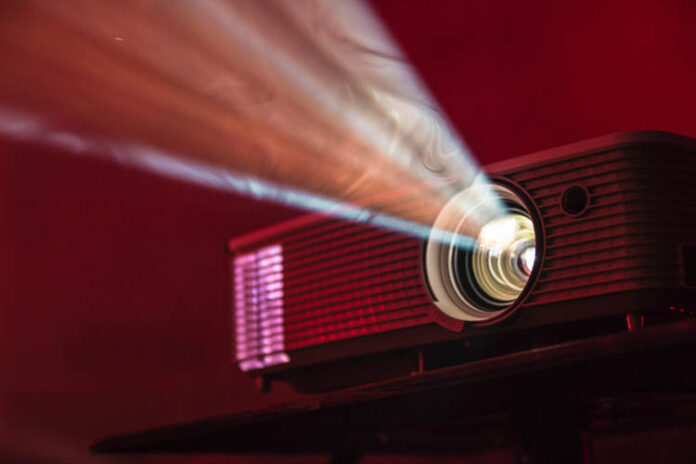A projector is an ideal alternative to the video monitor, as well as an ideal instrument for artists. You can use it to magnify drawings and display them on your workspace and then easily traced. They are also useful to use for mural painting, video art, or displaying your portfolio. Portable projectors are especially useful when you’re limited on space or want a projector that you can carry around. They’re small enough to fit into your bag they’re not the same as large-sized machines but they’re certainly powerful enough for daily studio use.
What is an Artist Projector?
The thing we’re talking about is a tool that can project an image on the wall or on a large artwork piece or canvas (you could with the right art projector, illuminate these two! ) This way, you can draw or paint the original image. You can make use of it as a reference to create murals, decorations, as well as other work, and show off your work for display in your studio, in a gallery, or even on a wall for your client.
Art projectors are available in a variety of sizes from beautiful darned large to pocket-sized as well as many price points.
Certain art projectors, referred to as opaque projectors, project a drawn, painted or printed image onto canvas or paper (or any other transparent, flat material) and others, referred to as digital projections make use of the digital image, video or any else that you could view through your phone, tablet or computer display.
What Can You Use an Art Projector For?
Artists, who are creative, have a myriad of applications for their art projectors and some of the popular and less so uses are:
- The projection of an image or any other guidelines onto a wall to creating the mural
- Copying or tracing an image on a huge scale
- Displaying Art
- Creating Multimedia Art Pieces and Installations
- Making a Light Show
- Showing or working on video or animated content
- Cool mood lighting
- Showing pictures and slide shows that are running
- projecting slides, graphics along with other pictures for sales, meetings, presentations , etc.
If you own a digital art projector , you can , of course you can watch videos or movies but only when your work is completed!
What Different Kinds of Art Projectors Are There?
There are many types of projectors, obviously, and some have been in use for a long time If you’re looking for three distinctly old-school examples, we have the hot, loud overhead projectors the heavy and frequently jammed slide projector and the film projector, which is generally loud and hot however with the added bonus of spooling precious film film across the floor of the classroom.
We’ll discuss describe two types of projectors that are the most helpful to artists.
- Opaque ProjectorThe projector shines light on the physical image, specifically, a small (maybe 7 inches) and opaque piece of paper fabric, or canvas. It it then shines the image on the wall (or an unintended canvas or sheet of material) by using prisms and mirrors and creates the size of a projected version of your original picture that you can play with or on.
- Digital Projector Digital Projector – the digital art projector makes use of instead of a physical printed, drawn or painted photo, an electronic or computer file, and then projects the image onto the wall. It also allows you to project films and videos on the wall, though you might realize it difficult to project the same content. Game of Thrones was already quite intense on your 5 inch phone screen.
What to Look For in a Projector for Art
We’ve discussed before the possibility of whether you should purchase a Best Projector for Artists, an opaque scanner or both, and that is the most important step to determine. Once you’ve settled on that you’ll discover that in either case – transparent projector or digital it is important to search for the exact same items:
Led Lights: It’s absurd and yet some projectors employ incandescent light sources which are hotter and less color neutral more unstable, harder to see, require much more energy, and last just a tiny fraction of the life span of the most modern LED bulbs.
Brightness: It is possible to imagine projection in dark rooms and not be concerned about how bright your projector’s brightness is, but it’s great to be able to the new device either in the dark or lit room. However, bright light projectors offer more flexibility , with the option of not only projecting on the painting or paper and through the surface.
Resolution: Many people believe that for art it doesn’t matter what resolution the device does not have any significance, however this seems a bit silly. This is especially true for the digital projector that will project digital files however, you will observe that sharper projectors create your art, or any source image you’re using clearer and easier to work on and draw accurately.
Connectivity This is limited to digital projectors which could include USB connectors memory cards cloud connectivity Bluetooth, wireless Bluetooth, HDMI video inputs and various other methods for connecting.
The size and throw of the projection screen: How big of an image do you plan to be able to project and how far from the wall the projector will be? This is a crucial aspect and you can rest assured that the projectors I’ll suggest as part of this buyers guide to most effective projectors for artists can show an image that’s huge, massive even and work in any size space – even if you’re not employed by National Parks and planning a presentation at the Grand Canyon, you will certainly be protected!











